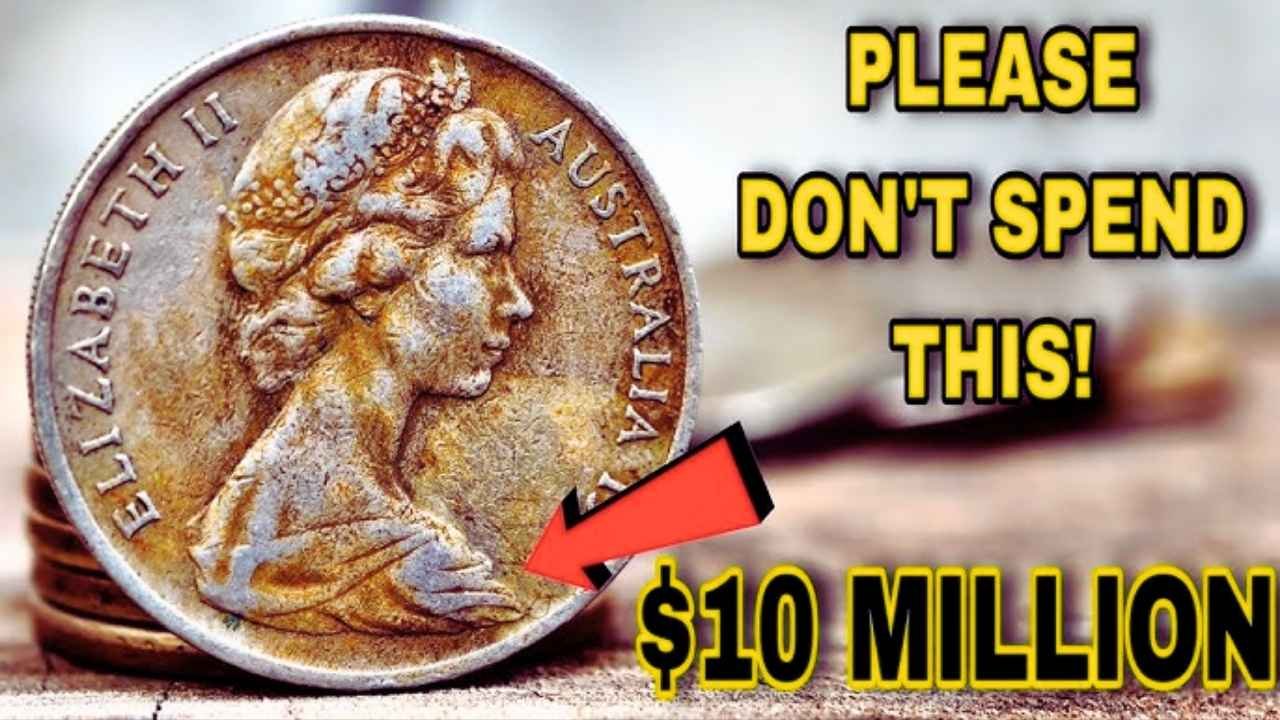A Hidden Jackpot in Your Change
The Australian 20-cent coin, a staple of daily transactions, could turn you into a millionaire if you spot a rare variant, with some fetching astronomical sums at auctions. While claims of a single 20-cent coin worth $1 million are unverified and likely exaggerated, specific error coins and low-mintage varieties from 1966 to the 1980s are highly prized, with values ranging from hundreds to tens of thousands of dollars. With millions still in circulation, collectors are scouring change jars and cash registers, fueled by buzz on X and TikTok from enthusiasts like Michael McCauley. Here’s your guide to the rare 20-cent coins that could make your wallet sing.
The Legacy of the 20-Cent Coin
Introduced on February 14, 1966, with Australia’s decimal currency switch, the 20-cent coin originally featured Stuart Devlin’s platypus reverse, a design still used for non-commemorative issues. Early coins were struck by the Royal Mint in London, the Royal Australian Mint (RAM), and later by mints in Canada and Wales due to production demands. Errors from these mints, especially in 1966 and the 1980s, created rarities that collectors crave. While most 20-cent coins are worth face value, unique flaws or foreign planchet errors can elevate their worth dramatically, as noted by sites like australian-coins.com.
Top Rare 20-Cent Coins to Find
Keep an eye out for these valuable variants:
- 1966 Wavy Baseline: A Royal Mint London die error creates a “wave” on the top edge of the “2” baseline. Circulated examples fetch $200–$500, while uncirculated ones can hit $2,000–$5,500. Only a tiny fraction of the 58.2 million 1966 coins have this feature.
- 1981 Scalloped Planchet: Struck on Hong Kong $2 scalloped blanks during industrial action at RAM, fewer than 10 are known, valued at $15,000–$20,000.
- 1981 Three-and-a-Half Claws: Royal Canadian Mint coins with a half-length claw on the platypus’s left paw are worth $50+ in uncirculated condition.
- Foreign Planchet Errors: 1970s coins struck on Thai token or Nepalese blanks, or 2000s bi-metal planchets (possibly Iranian), range from $500–$5,000.
Use a magnifying glass to check the “2” baseline, platypus claws, or planchet shape, and weigh coins (standard: 11.3g) to spot foreign blanks. Authenticate finds with grading services like PCGS or NGC.
Key Valuable 20-Cent Coins
| Key Variants | Estimated Value | Rarity |
|---|---|---|
| 1966 Wavy Baseline | $200–$5,500 | Very Rare |
| 1981 Scalloped Planchet | $15K–$20K | Extremely Rare |
| 1981 Three-and-a-Half Claws | $50–$500 | Moderately Rare |
| Foreign Planchet (1970s–2000s) | $500–$5K | Rare |
Market Hype and Reality
The $1 million claim, often tied to the 1966 Wavy Baseline or foreign planchet errors, lacks verified auction records, with the highest known sale being a 1966 Wavy Baseline at ~$5,500, per Yahoo Finance. A 1971 20-cent coin, with a low mintage of 8.9 million, can reach $80 in perfect condition due to scarcity. The 1981 Scalloped Planchet’s $20,000 ceiling is the closest to a “fortune,” but million-dollar valuations are speculative, as debunked on Reddit’s r/coins. Still, the collector’s market is thriving, with eBay listings for rare 20-cents ranging from $160–$6,500. Avoid counterfeits by verifying with experts, and never clean coins, as it slashes value.
Start Your Coin Hunt
Your next 20-cent coin could be a jackpot check change, old collections, or bank rolls for wavy baselines, odd planchets, or unique mint marks. TikTok’s @coincollecting_detecting and resources like coinscatalog.net offer spotting tips. Visit coin fairs or dealers like Downies Collectables, and use apps like PCGS CoinFacts for verification. With Australia’s numismatic scene heating up in 2025, as noted by 7NEWS, now’s the time to hunt. That loose change in your pocket might just be a rare gem waiting to shine



